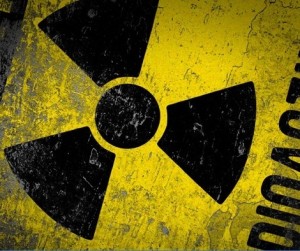By Tsuyoshi Inajima and Kari Lundgren - Aug 3, 2011 12:24 PM GMT+0300
Tokyo Electric Power Co. reported its second deadly radiation reading in as many days at its wrecked Fukushima nuclear plant north of Tokyo.
The utility known as Tepco said yesterday it detected 5 sieverts of radiation per hour in the No. 1 reactor building. On Aug. 1 in another area it recorded radiation of 10 sieverts per hour, enough to kill a person “within a few weeks” after a single exposure, according to the World Nuclear Association.
Radiation has impeded attempts to replace cooling systems to bring three melted reactors and four damaged spent fuel ponds under control after a tsunami on March 11 crippled the plant. The latest reading was taken on the second floor of the No. 1 reactor building and will stop workers entering the area.
“It’s probably the first of many more to come,” said Michael Friedlander, who spent 13 years operating nuclear power plants in the U.S., including the Crystal River Station in Florida. “Although I am not surprised, it concerns me greatly; the issue is the worker safety.”
The 10 sieverts of radiation detected on Aug. 1 outside reactor buildings was the highest the Geiger counters used were capable of reading, indicating the level could have been higher, Junichi Matsumoto, a general manager at the utility, said at a press conference.
Upper Limit
“Ten sieverts is the upper limit for many dosimeters and almost equal to the amount that killed workers at the JCO nuclear accident in 1999,” said Tomoko Murakami, a nuclear researcher at the Institute of Energy Economics, Japan.
In that accident, then the world’s worst since Chernobyl in 1986, more than 600 people were exposed to radiation after workers inadvertently started a nuclear chain reaction while processing nuclear fuel at a plant near Tokyo. Two employees of JCO Co., a wholly-owned subsidiary of Sumitomo Metal Mining Co., died from radiation exposure.
Tepco was forced to pump water into the three Fukushima reactors after the March 11 earthquake and tsunami disabled cooling systems. The company in May estimated there would be 200,000 tons of radiated water in basements and other areas of the Fukushima Dai-Ichi plant by December.
“If nuclear fuels melted through containment chambers, Tepco will find even higher radiation readings after water in building basements is removed,” said Tetsuo Ito, the head of the Atomic Energy Research Institute at Kinki University.
Radiation Leaks
Tepco has been criticized by the government for withholding radiation data and other missteps that have worsened the crisis. About 160,000 people have been evacuated from areas stretching 20 kilometers and more from the plant.
On May 27, Chief Cabinet Secretary Yukio Edano said Tepco’s withholding radiation data was contributing to “public distrust.” The utility responded by saying it will publish in August the combined figures of radiation released into the atmosphere and in contaminated water. It hasn’t given a date for release of that information.
Radiation leaks from the Fukushima reactors have spread over 600 square kilometers, Tomio Kawata, a fellow at the Nuclear Waste Management Organization of Japan, said in a research report published on May 24 and given to the government.
Radioactive soil in pockets of areas outside the exclusion zone around the plant have reached the same level as in Chernobyl following a reactor explosion in the former Soviet Union, the report said.
Hot Spots
The threats to Japan’s food chain are also multiplying as radioactive cesium emissions from the Fukushima plant spread. Contaminated beef has been found on supermarket shelves around the country, forcing the government to ban cattle shipments from areas in northern Japan.
The latest high radiation readings are probably coming from materials released during early failed attempts to release pressure in containment vessels and vent hydrogen gas to prevent explosions that damaged reactor buildings, Matsumoto said. There were about 2,760 workers at the plant on Aug 1.
Tepco on April 17 set out a so-called road map to end the crisis by January, aiming to bring down radiation levels at the plant within three months and then achieve a so-called cold shutdown where reactor temperatures fall below 100 degrees Celsius (212 degrees Fahrenheit).
The utility needs to investigate other areas that may hold high radiation levels in line with the cold-shutdown and clean up, said Murakami at Energy Economics.
“Tepco workers and its subcontractors who know the Fukushima plant well may be the only ones that can discover such hot spots,” he said. “For people new to the plant it’s deadly.”
To contact the reporters on this story: Tsuyoshi Inajima in Tokyo at tinajima@bloomberg.net; Kari Lundgren in London at klundgren2@bloomberg.net
To contact the editor responsible for this story: Peter Langan at plangan@bloomberg.net









No comments:
Post a Comment